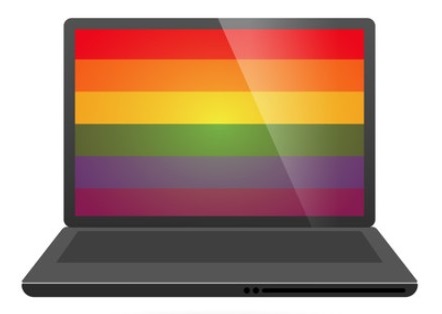
MYTHS ABOUT COMING OUT AS LGBTQ+ AT WORK
Myth #1: Coming out is the same for all LGBTQ+ people. FALSE. It’s important to recognize that the experience of coming out is as unique as every LGBTQ+ individual. Recent increased instances of hateful rhetoric, discriminatory legislation, even actual violence show that coming out can still be dangerous, especially for trans and gender diverse people. There can also be differences situationally. For example, some LGBTQ+ people may be out at work, but not with all family members or friends, or with their church community, etc. Alternatively, other LGBTQ+ employees might feel comfortable being out in their personal life, but be less willing to come out at work due to fears of discrimination and social exclusion. The workplace experiences of LGBTQ+ employees are diverse, and even with increased support, legal protections and company policies related to non-discrimination, their work experiences can sometimes vary from those of their cis straight counterparts.
Myth #2: Coming out at work isn’t a big deal anymore. FALSE. No one gets to decide whether coming out at work is or isn’t a big deal except for the individual doing the coming out. The 6/15/2020 SCOTUS ruling made it illegal in all 50 states to fire an employee for being gay, bisexual, or transgender, but how safe or comfortable someone feels about coming out at work depends on legal (state, municipal) and company policy protections in place, workplace culture, at-work supports (including the presence of allies), and themselves.
Myth #3: You only have to come out at work once. FALSE. Coming out is actually a process – an extremely repetitive process that can occur on multiple occasions with different / sometimes overlapping groups or individuals. For instance, a woman may come out as lesbian to the company’s HR representative or an immediate manager when first starting a new job; then again later when meeting co-workers, other managers, vendors or clients; then again during a function when asked where their “husband” is, etc.
Myth #4: LGBTQ+ workers have control over whether / when they come out at work. FALSE. Some LGBTQ+ individuals have the decision made for them because they’re either outed against their will or forced to come out because of workplace policies or because they’re out “merely by existing.” Others may not be “outed” but can feel that living authentically at work is only an aspiration due to factors that are (or that they feel are) outside their control.
Myth #5: Coming out has nothing to do with work. FALSE. Part of a person’s identity and self-worth revolves around their work – what they do & how they support themselves. Research shows that people who are able to come out at work have more job satisfaction than those who are only out to some people, or not out at all. Research also finds that having to lead a double life (for example, being out in private life but not at work) increases social stress and depression.
Myth #6: There is only one way to come out or not come out. FALSE. There are a range of options LGBTQ+ people can use to signal their identities, or not to. Some people choose a direct approach and come out to co-workers by verbally sharing the information with them in-person. Others might display photographs, images or symbols in their office space or on their laptop, vehicle, clothing etc. to more quietly reveal their identity at work. Still others might choose to avoid revealing their identity, by keeping quiet during co-worker talk about their weekends, consciously not behaving in ways that may conform to stereotypes associated with their identity, or by choosing to “fly under the radar” as heterosexual or cisgender.
Myth #7: People are scared of career risks if they come out. TRUE, and FALSE. Coming out definitely requires the weighing of risks and options. While factors such as a lack of support from supervisors or co-workers and prior instances of discrimination can prevent some LGBTQ+ workers from coming out, research shows that LGBTQ+ employees are more concerned about social exclusion than career penalties. Because while laws can legislate legally-permissible vs. discriminatory behavior, society cannot legislate attitudes.
WHAT ALLIES AT WORK CAN DO TO SUPPORT THEIR LGBTQ+ CO-WORKERS
There are daily opportunities to live out allyship and make the space in which you work more welcoming and affirming to LGBTQ+ co-workers. These conversations and actions become easier when you see allyship as an ongoing process of reflection and action. Here are five things you can do to help support LGBTQ+ co-workers and colleagues at your workplace:
- Learn about the LGBTQ+ community, ALL members of the LGBTQ+ community. This means acknowledging and honoring not only lesbian, gay and bisexual individuals but also those who are pansexual or hold other sexual identities; as well as people who are trans, gender diverse or who have an intersex variation.
- Consider the assumptions you may bring to the table, and ensure they don’t hinder LGBTQ+ inclusion. If your reality includes any of the following obsolete beliefs, spend time considering ways you can better promote inclusion/ support LGBTQ+ co-workers:
• everyone is straight
• a heterosexual couple is the normative romantic relationship
• everyone prefers binary pronouns
• coming out is not a workplace issue, just strictly personal
• (Insert Name*) must be LGBTQ+ because of how they (dress, look, behave, date)
• “outing” someone isn’t a big deal anymore - Consider the non-inclusive language or behaviors you may be using at work, and take steps to avoid perpetuating them. For example, do not assume / verbalize binary standards regarding someone’s pronouns; when speaking with co-workers don’t automatically ask women about their “husbands” / men about their “wives”; don’t use phrases that are derogatory to the LGBTQ+ community.
- If you hear / see someone engaging in derogatory language or behaviors, it’s important to call it out. When you do so, that person will be less likely to do it again and they will also be more likely to change their views on what is appropriate workplace behavior — as will any bystanders.
- Recognize the value of LGBTQ+ inclusion in your organization. You don’t have to display inclusive symbols or LGBTQ+ flags / imagery to show support – just show respect, adhere to company policies, and hold others accountable every time the need arises.
_________________________________________________________
IntraSpectrum Counseling is Chicago’s leading psychotherapy practice dedicated to the LGBTQ+ community, and we strive to provide the highest quality mental health care for clients of all ages and across the spectrum of identities. For anyone needing affirming and validating support or healing with any issue, please click here or email us at help@intraspectrum-chicago.com.





 Today, July 26th, is National Disability Independence Day. This annual commemoration marks the day in 1990 when the Americans with Disabilities Act (ADA) was signed into law. The ADA enshrined several crucial civil rights protections for individuals with disabilities, but it still falls short of its intended goals after over 30 years on the books.
Today, July 26th, is National Disability Independence Day. This annual commemoration marks the day in 1990 when the Americans with Disabilities Act (ADA) was signed into law. The ADA enshrined several crucial civil rights protections for individuals with disabilities, but it still falls short of its intended goals after over 30 years on the books.